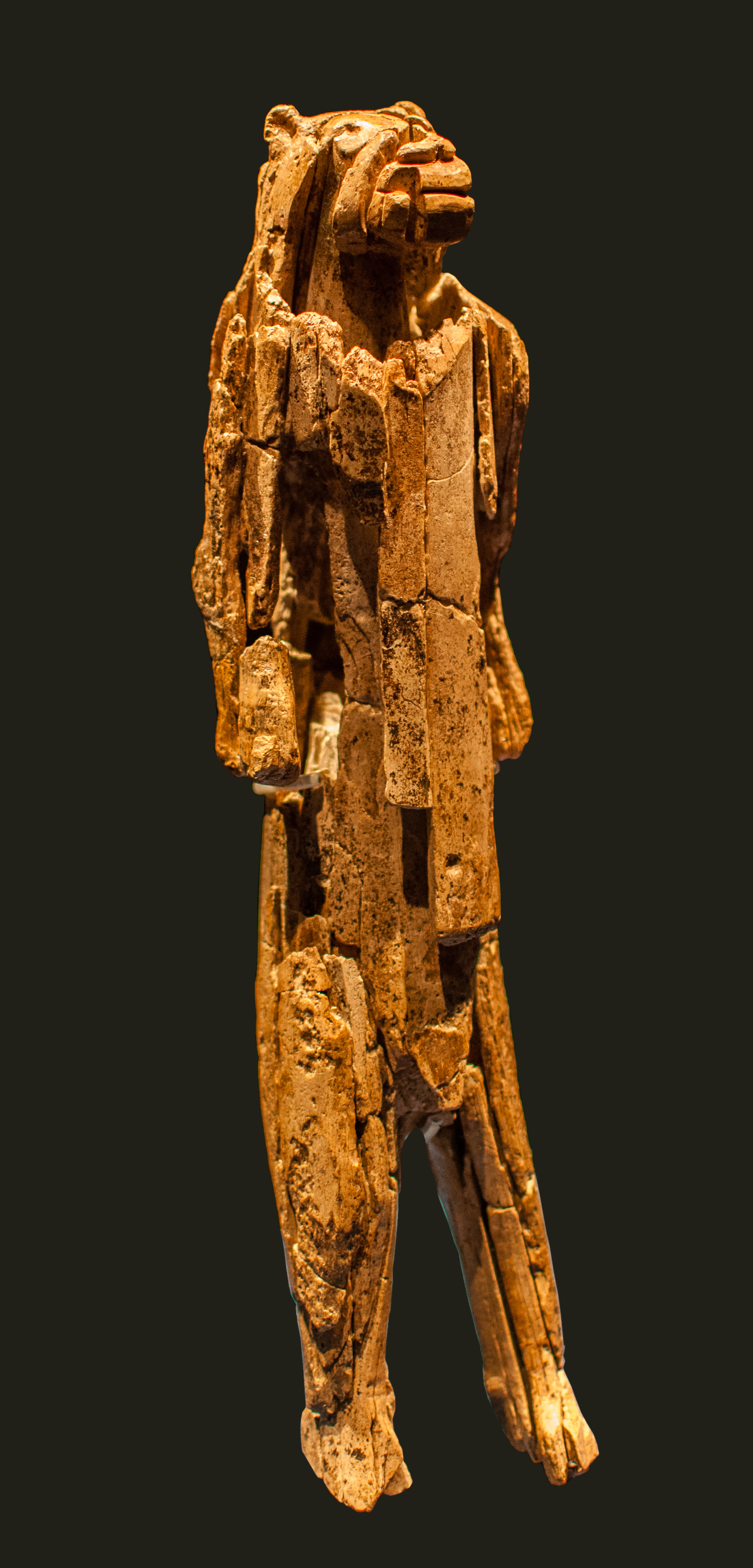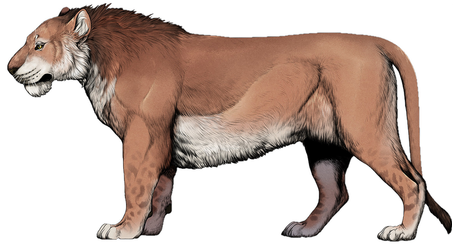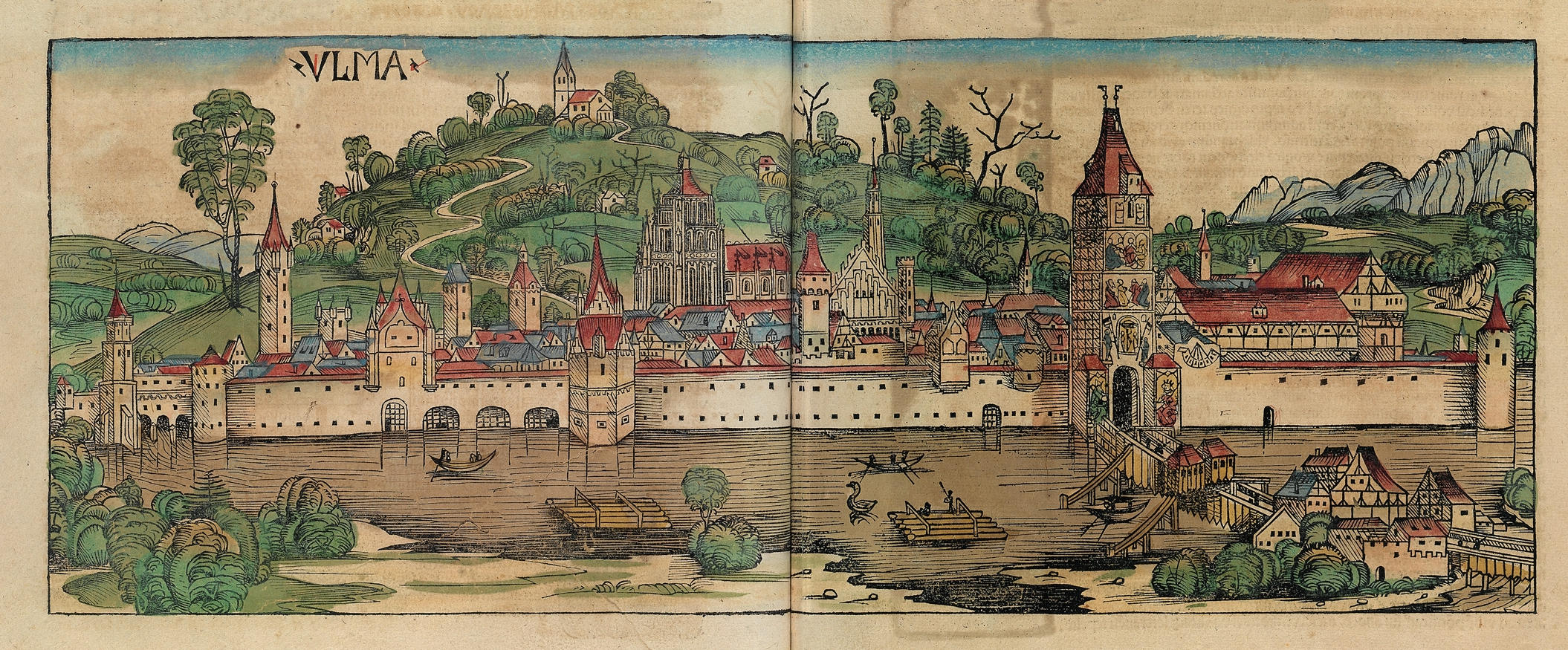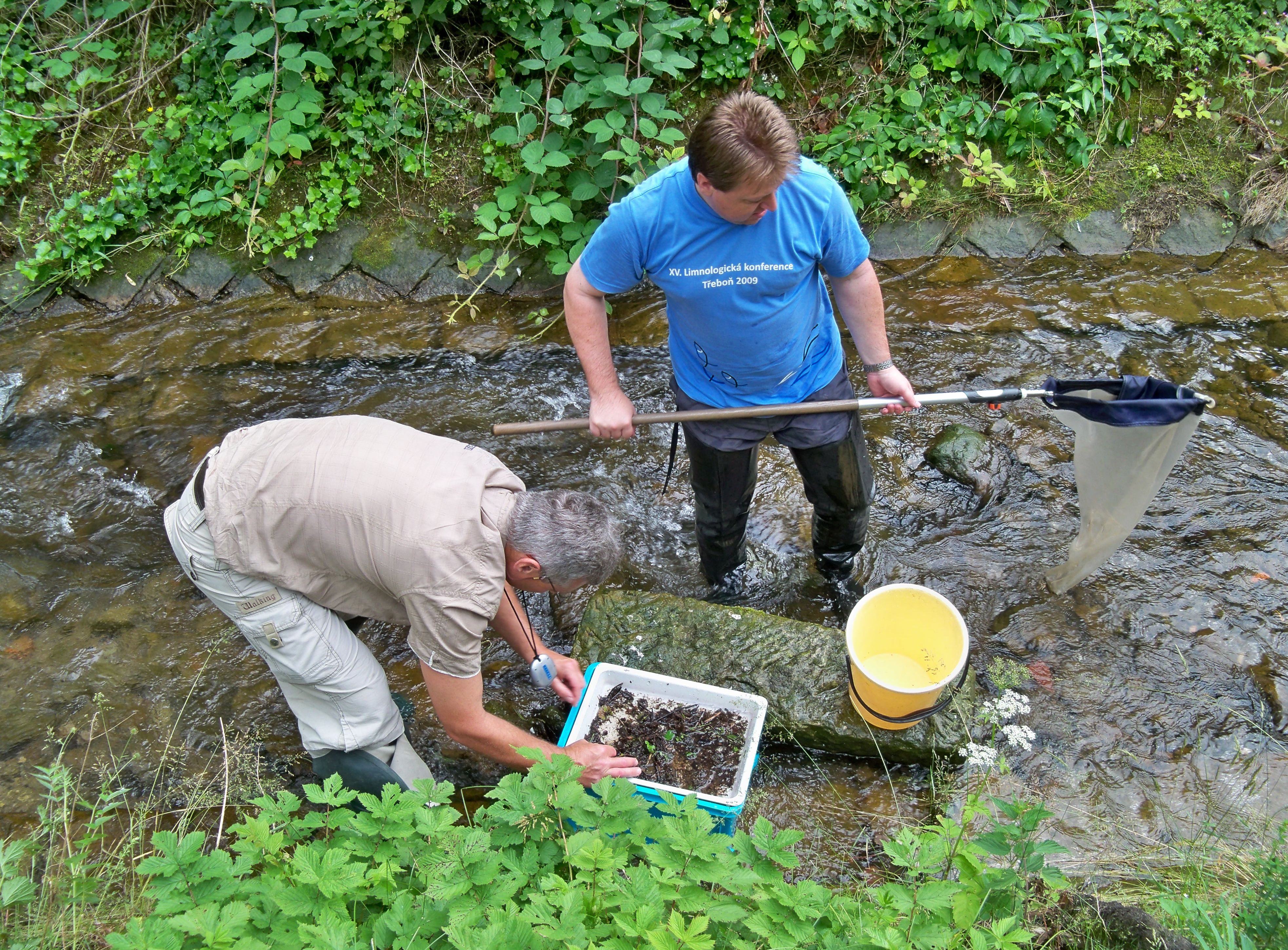|
Lion-man
The figurine, also called the Lion-man of , is a prehistoric ivory sculpture discovered in Hohlenstein-Stadel, a German cave, part of the Caves and Ice Age Art in the Swabian Jura UNESCO World Heritage Site, in 1939. The German name, , meaning "lion-person" or "lion-human", is used most frequently because it was discovered and is exhibited in Germany. It is an anthropomorphic figurine combining a human-like body with the head of a Panthera spelaea, cave lion. Determined by Radiocarbon dating, carbon dating of the layer in which it was found to be between 35,000 and 41,000 years old, it is one of the oldest-known examples of an figurative art, artistic representation and the oldest confirmed statue ever discovered. Its age associates it with the archaeological Aurignacian culture of the Upper Paleolithic. An example of Zoomorphism, zoomorphic art, it was carved out of mammoth ivory using a flint stone knife. Seven parallel, transverse, carved gouges are on the left arm. Af ... [...More Info...] [...Related Items...] OR: [Wikipedia] [Google] [Baidu] [Amazon] |
Aurignacian
The Aurignacian () is an archaeological industry of the Upper Paleolithic associated with Cro-Magnon, Early European modern humans (EEMH) lasting from 43,000 to 26,000 years ago. The Upper Paleolithic developed in Europe some time after the Levant, where the Emiran, Emiran period and the Ahmarian, Ahmarian period form the first periods of the Upper Paleolithic, corresponding to the first stages of the expansion of ''Homo sapiens'' out of Africa. They then migrated to Europe and created the first European culture of modern humans, the Aurignacian. The Proto-Aurignacian and the Early Aurignacian stages are dated between about 43,000 and 37,000 years ago. The Aurignacian proper lasted from about 37,000 to 33,000 years ago. A Late Aurignacian phase transitional with the Gravettian dates to about 33,000 to 26,000 years ago. The type site is the Cave of Aurignac, Haute-Garonne, south-west France. The main preceding period is the Mousterian of the Neanderthals. One of the oldest exa ... [...More Info...] [...Related Items...] OR: [Wikipedia] [Google] [Baidu] [Amazon] |
Hohlenstein-Stadel
Hohlenstein-Stadel is a cave located in the Hohlenstein cliff (not to be confused with the Hohle Fels) at the southern rim of the Lonetal (valley of the Lone) in the Swabian Jura in Germany. While first excavations were started after the second half of the 19th century, the significance of some of the findings was not realized until 1969. The most significant finding was a small ivory statue called the '' Löwenmensch'', which is one of the oldest pieces of figurative art ever found. The Hohlenstein cliffs are made of limestone which was hollowed out by natural causes to create caves. The Stadel (meaning "barn") is one of three caves in the area that are of important paleontological and archaeological significance. The other two are the Kleine Scheuer ("little barn") and the Bärenhöhle ("bears' cave"). In 2017 the site became part of the UNESCO World Heritage Site Caves and Ice Age Art in the Swabian Jura. Excavations The first excavations at Hohlenstein were made in 1861 b ... [...More Info...] [...Related Items...] OR: [Wikipedia] [Google] [Baidu] [Amazon] |
Caves And Ice Age Art In The Swabian Jura
The Caves and Ice Age Art in the Swabian Jura are a collection of six caves in southern Germany which were used by Last Glacial Period, Ice Age humans for shelter about 33,000 to 43,000 years ago. Within the caves were found the oldest non-stationary works of human art yet discovered, in the form of carved animal and humanoid figurines, in addition to the oldest musical instruments ever found. One statuette of a female form, carved figurines of animals (including cave lions, mammoths, horses and cattle), musical instruments and items of personal adornment have been discovered. Some of the figurines depict creatures that are half animal, half human. Because of their testimony to the development of Paleolithic art and culture, the six caves were inscribed on the UNESCO World Heritage List in 2017. The caves are seen as the first centre of human art, were named "cradle of art" and "cradle of civilization", with a continuous cultural heritage over 6000 years, and are among the first ... [...More Info...] [...Related Items...] OR: [Wikipedia] [Google] [Baidu] [Amazon] |
Panthera Spelaea
''Panthera spelaea'', commonly known as the cave lion (or less commonly as the steppe lion), is an extinct ''Panthera'' species that was native to Eurasia and northwest North America during the Pleistocene epoch. Genetic analysis of ancient DNA has revealed that while closely related, it was a distinct species genetically isolated from the modern lion (''Panthera leo''), with the genetic divergence between the two species estimated at around 500,000 years ago. The earliest fossils of the ''P. spelaea'' lineage (either regarded as the separate species ''Panthera fossilis'' or the subspecies ''P. spelaea fossilis'') in Eurasia date to around 700,000 years ago (with possible late Early Pleistocene records). It is closely related and probably ancestral to the American lion (''Panthera atrox''). The species ranged from Western Europe to eastern Beringia in North America, and was a prominent member of the mammoth steppe fauna, and an important apex predator across its range along wit ... [...More Info...] [...Related Items...] OR: [Wikipedia] [Google] [Baidu] [Amazon] |
Upper Paleolithic
The Upper Paleolithic (or Upper Palaeolithic) is the third and last subdivision of the Paleolithic or Old Stone Age. Very broadly, it dates to between 50,000 and 12,000 years ago (the beginning of the Holocene), according to some theories coinciding with the appearance of behavioral modernity in early modern humans. It is followed by the Mesolithic. Anatomically modern humans (i.e. ''Homo sapiens'') are believed to have emerged in Africa around 300,000 years ago. It has been argued by some that their ways of life changed relatively little from that of archaic humans of the Middle Paleolithic, until about 50,000 years ago, when there was a marked increase in the diversity of Artefact (archaeology), artefacts found associated with modern human remains. This period coincides with the most common date assigned to early human migrations, expansion of modern humans from Africa throughout Asia and Eurasia, which may have contributed to the Neanderthal extinction, extinction of th ... [...More Info...] [...Related Items...] OR: [Wikipedia] [Google] [Baidu] [Amazon] |
Museum Ulm
The Museum Ulm (Museum der Stadt Ulm), founded in 1924, is a museum for art, archeology, urban and cultural history in Ulm, Germany. Exhibits range from prehistoric and early archaeological finds of the Ulm region (including the lion-man statuette) to Late (International) Gothic and Renaissance paintings and sculptures made in Ulm and Upper Swabia. Collections of 16th-to-19th-century artisan works by Ulm's handicraft guilds are also presented. Conservator and university professor Julius Baum became the museum’s founding director and its first art historian on 1 April 1924. According to his successor Erwin Treu, "this started the real history" as "an institute emerged from a junk room". Exhibits Prehistory The museum's permanent archaeological exhibition was redesigned in 2014 after further fragments of a 35,000 to 41,000-year-old mammoth ivory sculpture were recovered at the original site in the Lone Valley. This lion-man figurine is a human with the head and the limbs ... [...More Info...] [...Related Items...] OR: [Wikipedia] [Google] [Baidu] [Amazon] |
Ulm, Germany
Ulm () is the sixth-largest city of the southwestern German state of Baden-Württemberg, and with around 129,000 inhabitants, it is Germany's 60th-largest city. Ulm is located on the eastern edges of the Swabian Jura mountain range, on the upper course of the River Danube, at the confluence with the small Blau Stream, coming from the Blautopf in the west. The mouth of the Iller also falls within Ulm's city limits. The Danube forms the border with Bavaria, where Ulm's twin city Neu-Ulm lies. The city was part of Ulm until 1810, and Ulm and Neu-Ulm have a combined population of around 190,000. Ulm forms an urban district of its own (''Stadtkreis Ulm''), and is the administrative seat of the Alb-Donau-Kreis, the district that surrounds it on three sides, but which the city itself is not a part of. Ulm is the overall 11th-largest city on the river Danube, and the third-largest German Danubian city after Regensburg and Ingolstadt. Founded around 850, Ulm is rich in history and tr ... [...More Info...] [...Related Items...] OR: [Wikipedia] [Google] [Baidu] [Amazon] |
Germany
Germany, officially the Federal Republic of Germany, is a country in Central Europe. It lies between the Baltic Sea and the North Sea to the north and the Alps to the south. Its sixteen States of Germany, constituent states have a total population of over 84 million in an area of , making it the most populous member state of the European Union. It borders Denmark to the north, Poland and the Czech Republic to the east, Austria and Switzerland to the south, and France, Luxembourg, Belgium, and the Netherlands to the west. The Capital of Germany, nation's capital and List of cities in Germany by population, most populous city is Berlin and its main financial centre is Frankfurt; the largest urban area is the Ruhr. Settlement in the territory of modern Germany began in the Lower Paleolithic, with various tribes inhabiting it from the Neolithic onward, chiefly the Celts. Various Germanic peoples, Germanic tribes have inhabited the northern parts of modern Germany since classical ... [...More Info...] [...Related Items...] OR: [Wikipedia] [Google] [Baidu] [Amazon] |
Elisabeth Schmid
Elisabeth Schmid (1912–27 March 1994) was a German archaeologist and osteologist. She is best known for her work concerning the prehistoric ivory statue, the lion-man, and for her book, ''Atlas of Animal Bones''. Schmid was the first woman to serve as dean of the natural sciences faculty of the University of Basel. In 1953 she co-founded the Swiss Archaeological Society with Rudolf Laur-Belart. Early life and career Schmid was born in Freiburg im Breisgau in 1912 and graduated with a PhD from the University of Freiburg. She was habilitated in Freiburg and Basel. Over her career, Schmid published over two hundred papers and two books. She began studying animal bones from Augusta Raurica in the 1950s, and her analysis of those bones was the subject of her most well-known book, ''Atlas of Animal Bones'', which was published in 1972 and is still used worldwide today. In 1953, she established a laboratory at the University of Basel for prehistoric studies. In 1975 she became the ... [...More Info...] [...Related Items...] OR: [Wikipedia] [Google] [Baidu] [Amazon] |
Joachim Hahn
Joachim Hahn (12 August 1942 in – 27 April 1997) was a German archaeologist and expert on the Upper Paleolithic era. Beginning in 1962, he studied at the University of Cologne, University of Bordeaux and the University of Tübingen. At the latter, he was promoted to research fellow in 1973. He published a thesis in 1977 at the University of Cologne, entitled "The Aurignacian in Central and Eastern Europe", and subsequently published several more papers. Beginning in 1985, Hahn was a prehistory and early history professor and member of the Academic Council at the University of Tübingen, where he was promoted to adjunct professor in 1988. He was a guest teacher at the University of Michigan, the State University of New York, the University of Paris and the University of Zurich, as well as being active in research, excavation and public relations. He led excavations in the Ach Valley and the caves of the Swabian Alb The Swabian Jura ( , more rarely ), sometimes also na ... [...More Info...] [...Related Items...] OR: [Wikipedia] [Google] [Baidu] [Amazon] |
Fieldwork
Field research, field studies, or fieldwork is the collection of raw data outside a laboratory, library, or workplace setting. The approaches and methods used in field research vary across disciplines. For example, biologists who conduct field research may simply observe animals interacting with their environments, whereas social scientists conducting field research may interview or observe people in their natural environments to learn their languages, folklore, and social structures. Field research involves a range of well-defined, although variable, methods: informal interviews, direct observation, participation in the life of the group, collective discussions, analyses of personal documents produced within the group, self-analysis, results from activities undertaken off- or on-line, and life-histories. Although the method generally is characterized as qualitative research, it may (and often does) include quantitative dimensions. History Field research has a long hist ... [...More Info...] [...Related Items...] OR: [Wikipedia] [Google] [Baidu] [Amazon] |
Mammoth Ivory
Ivory is a hard, white material from the tusks (traditionally from elephants) and teeth of animals, that consists mainly of dentine, one of the physical structures of teeth and tusks. The chemical structure of the teeth and tusks of mammals is the same, regardless of the species of origin, but ivory contains structures of mineralised collagen. The trade in certain teeth and tusks other than elephant is well established and widespread; therefore, "ivory" can correctly be used to describe any mammalian teeth or tusks of commercial interest which are large enough to be carved or scrimshawed. Besides natural ivory, ivory can also be produced synthetically, hence (unlike natural ivory) not requiring the retrieval of the material from animals. Tagua nuts can also be carved like ivory. The trade of finished goods of ivory products has its origins in the Indus Valley. Ivory is a main product that is seen in abundance and was used for trading in Harappan civilization. Finished ivory pr ... [...More Info...] [...Related Items...] OR: [Wikipedia] [Google] [Baidu] [Amazon] |








